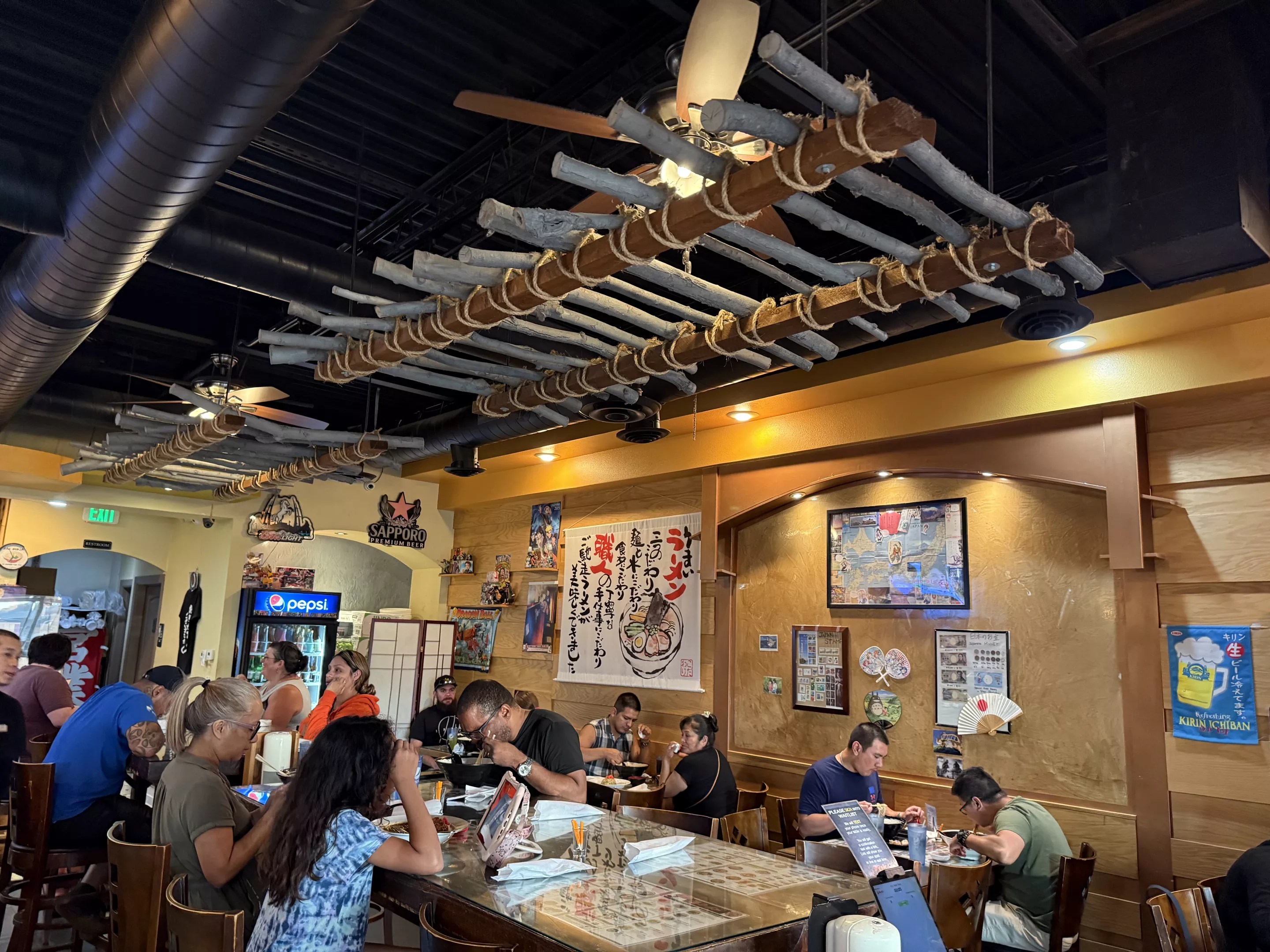
Antony Bruno

Audio By Carbonatix
Over a decade ago, former Westword food editor Mark Antonation began his food-writing career by eating his way up Federal Boulevard. Now, we’re turning our attention to another vibrant culinary corridor. The four-plus-mile stretch of Havana Street between Dartmouth and Sixth Avenue in Aurora is home to the most diverse array of international cuisine available in the metro area. From restaurants and markets to take-and-go shops and stands, food lovers of nearly any ethnicity or interest can find a place that will remind them of home or open new culinary doors. In Eat Up Havana, Antony Bruno will visit them all, one by one, week by week.
Previous stops:
- Old Town Hot Pot
- Leezakaya
- Chutney Indian Cuisine
- El Tequileno
- Milkroll
- Shin Myung Gwan Korean BBQ
- Watan Restaurant & Bakery
- Las Fajitas
- Mr. Tang
- Nana’s Dim Sum & Dumplings
- Yemen Grill
- Tofu House
- Sushi Katsu
- Coco Loco
- Ali Restaurant & Bakery
- Thank Sool Pocha
- Taqueria Corona
- Hanyang Wang Jokbal
- Coffee Story
- Tofu Story
- Havana Street Night Markets
- Seoul BBQ & Hot Pot (the Hot Pot)
- Seoul BBQ & Hot Pot (the BBQ)
- Pho 75
- Yong Gung
- Chopsticks A GoGo
- Angry Chicken
- L Cafe & Food Court
- Gangnam GT Lounge & Karaoke
This year, make your gift count –
Invest in local news that matters.
Our work is funded by readers like you who make voluntary gifts because they value our work and want to see it continue. Make a contribution today to help us reach our $50,000 goal!
Next up… Katsu Ramen Katsu Ramen has been serving Japanese ramen in Aurora for a decade Antony Bruno
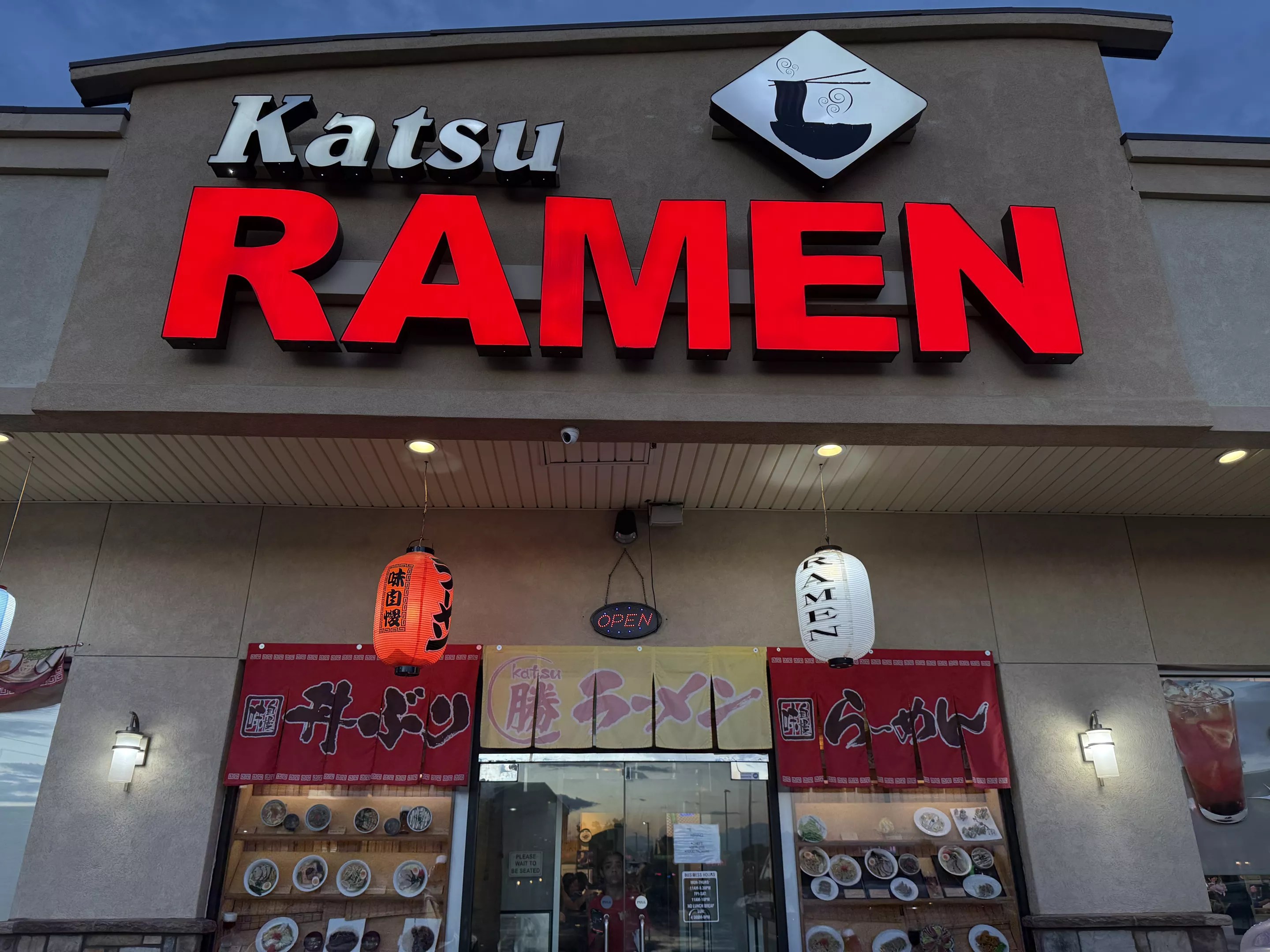
In Japan, the trick to finding a good ramen spot is to wander the periphery of nearly any train station and look for steam wafting from the narrow alleyways. Inside, you’ll find an impossibly narrow space, diners packed elbow-to-elbow at a counter (no tables) and endless bowls of steaming ramen handed directly from the cook.
In the Denver area, despite a handful of high-profile ramen restaurant closures, the best trick is to simply drive down Aurora’s Havana Street and find Katsu Ramen. There’s no alleyway. No luring steam shooting from a blind corner. But there is bowl after bowl of ramen satisfaction coming out of the kitchen that has kept this ten-year-old establishment at the top of the metro area’s ramen game.
Katsu Ramen was opened in 2015 by Yumi Ogai and her husband, Chang Lee, when there were very few ramen shops in Denver to speak of. The couple already owned a pair of sushi restaurants (Sushi Katsu, which they sold in 2017). But Ogai, who is from Chiba, Japan, had a hankering for ramen as well.
“I couldn’t find any ramen shops,” she says. “There were a few, but it wasn’t authentic ramen. So I thought maybe I could open one myself.”
Her solution was to hire two Japanese ramen chefs from Osaka, Japan, who created the menu, developed the dishes, and trained the staff to create the ramen experience Ogai was looking for.
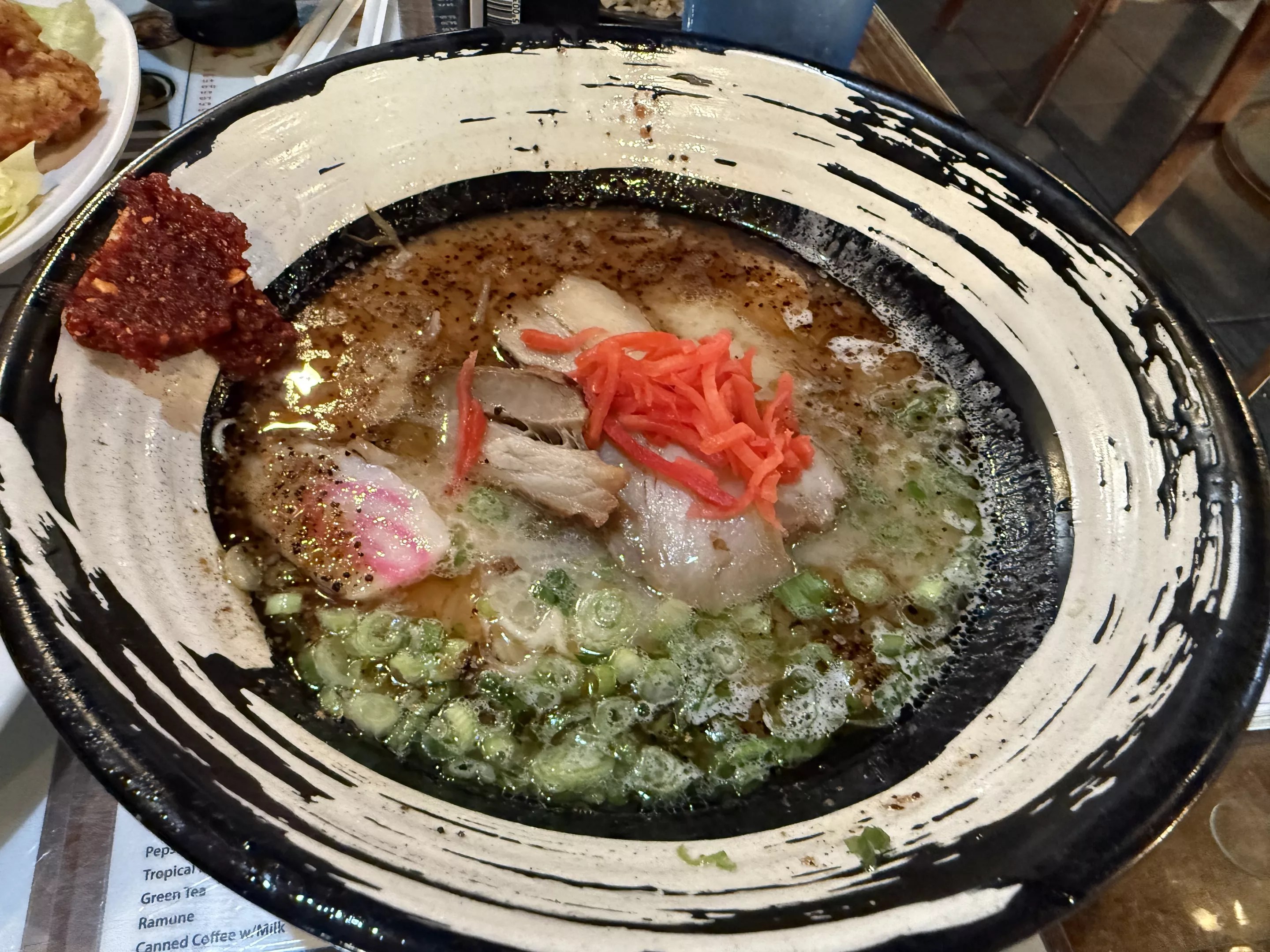
One of the most popular dishes on the Kastu Ramen menu is the black garlic tonkotsu, and for good reason.
Antony Bruno
The Ramen
While Katsu Ramen offers both shoyu and miso-based ramen options, the tonkotsu here is a real standout. Tonkotsu broth is made from pork bones, which here are simmered for over fifteen hours to release all the marrow and collagen needed to create a thick and creamy base. Here, you can order it three different ways: regular tonkotsu; mixed with Shoyu (a soy sauce-based sauce); or the fan favorite black garlic tonkotsu. Not to be confused with fermented black garlic, the black garlic used in this dish is actually made by finely mincing regular garlic and then toasting it in hot sesame oil, which essentially turns it black.
On paper, adding this black garlic sauce to the tonkotsu is simply an aromatic boost to the broth. But in the bowl (and in your mouth) it’s earth-shattering. If you’re normally Team Shoyu, this black garlic tonkotsu makes a strong case for changing your mind. One sip evokes instant food envy from the rest of the table.
That’s not to say the other ramen options are subpar. Far from it. The shoyu broth is a mix of soy sauce and dashi, which carries a noticeable element of kombu (dried kelp) that stands apart from the standard shoyu found in other ramen shops. And owner Ogai says she’s particularly fond of the spicy chicken option (Tan Tan Ramen). Most come with sliced roasted pork belly, a soft egg, pickled ginger, scallions and the obligatory fish cake.
Smeared at the side of each wide (and beautifully crafted) bowl is an optional chili paste, a spicy condiment mixed with a little honey to take the edge off. It’s easy enough to keep it at the rim if you don’t want it, but mixing it in your bowl provides a nice balance without overpowering the broth with heat.
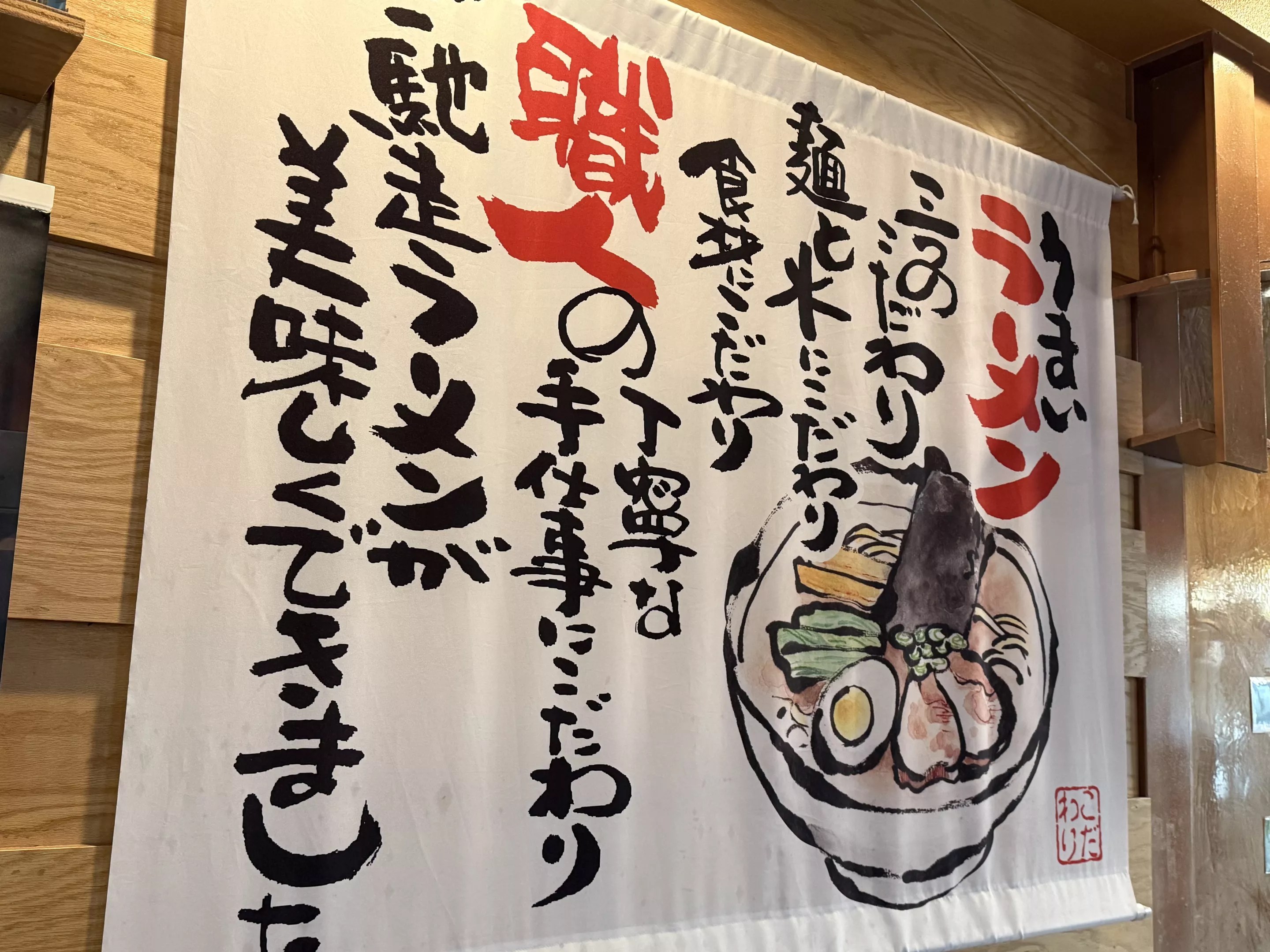
One of many canvases on the walls at Katsu Ramen highlighting the star of the menu.
Antony Bruno
The Space
You can’t visit Kastu Ramen and not comment on the interior, which clearly aims to bring a little piece of Japan back to Aurora. Think raw wood logs, bamboo accents, and paper lanterns. But there’s also an eclectic menagerie of posters, canvases, figurines and other knick-knacks covering nearly every wall space and shelving unit throughout the space, which Ogai says is the result of her chef’s collecting habit.
“I go back to Japan every year,” she says, “and my chef asks me to buy this or that. It’s one of his hobbies, so every time it’s something new. I don’t always know what it is, but every time it’s something new, or rare things.”
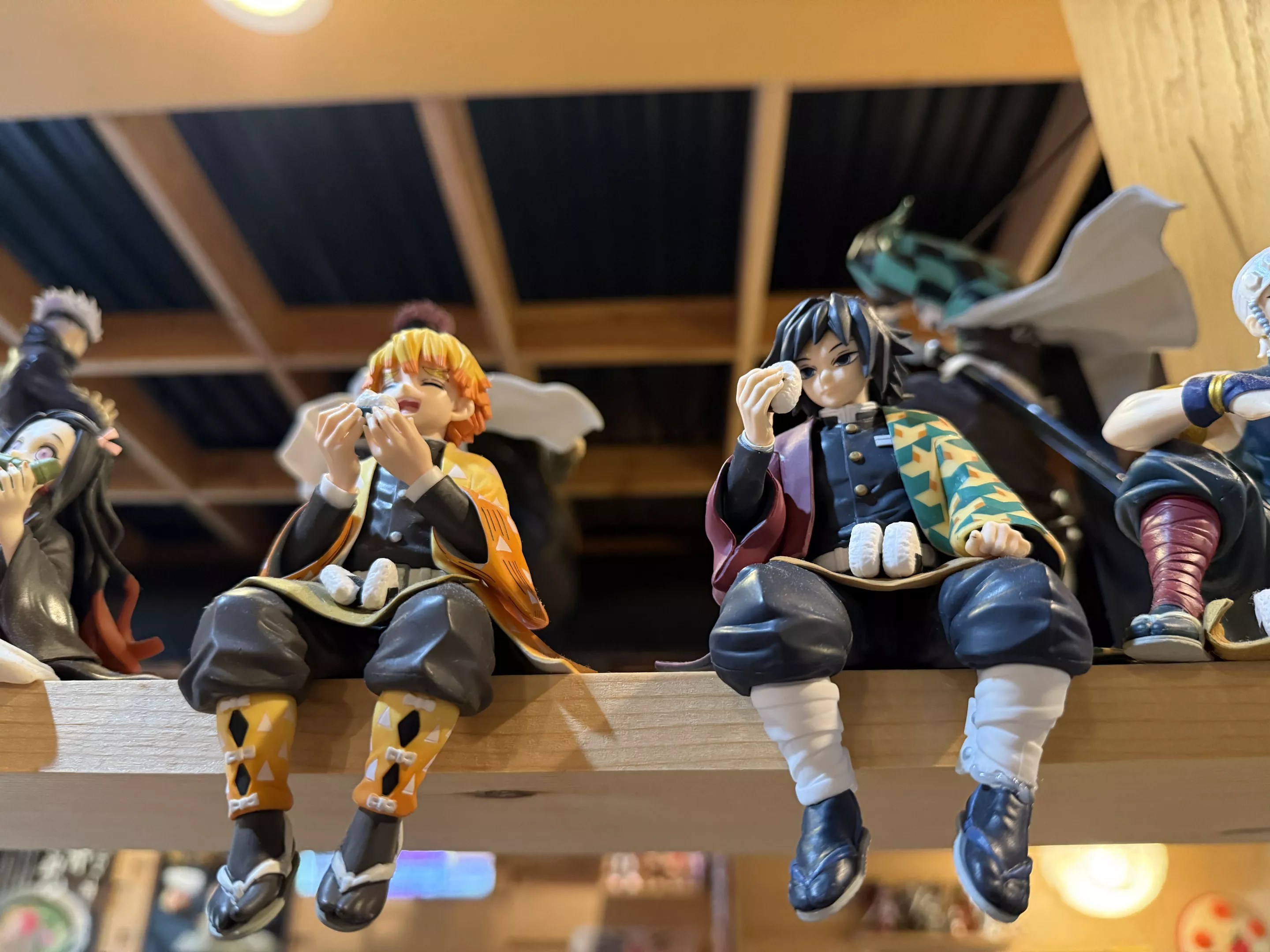
Even the collectable figurines that line nearly every surface of the restaurant eat well here.
Antony Bruno
Whether it was for more seating or more room to place all this stuff, Katsu Ramen expanded the space in 2017. It’s a mix of tables, booths and tallboys, most of which allow you to see what’s going on in the kitchen (along with the constant stream of takeout orders where the team packages the noodles, broth and toppings separately for at-home assembly).
Be sure to take a moment to appreciate the plastic food displays flanking the entrance. Called “sampuru” in Japanese, these “fake” food items meant to replicate the menu are a staple of restaurants in Japan – ramen shops included (and they have aided many a foreign traveler in navigating non-English menus).
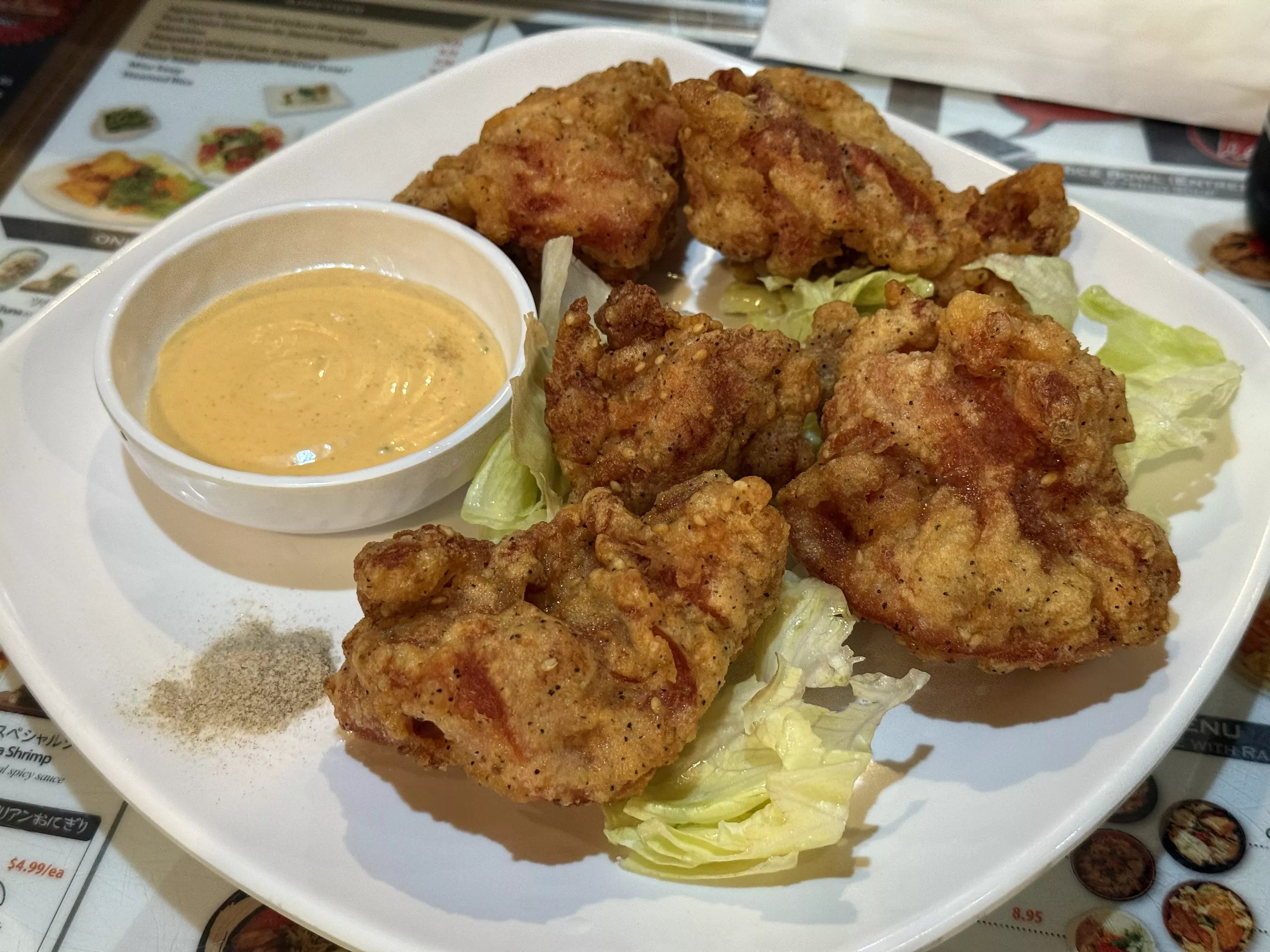
The karaage fried chicken. Boneless, crispy and delicious.
Antony Bruno
The Rest
While ramen is clearly the main event here, there’s plenty more to explore on the menu. No ramen meal is complete without a shared side of gyoza (pork dumplings). Another notable item here is the karaage – basically really large chicken nuggets, only much better. It’s fried chicken, without the bone, marinated and covered in flour and starch, then fried and served with a spicy mayo.
Also worth considering are the many onigiri options. Onigiri are balls of rice filled with various options-grilled salmon, miso beef, teriyaki spam, tempura shrimp, etc. Then there are the many rice bowls, meant to accompany the larger ramen meal – fried rice, beef curry and katsu dan, all of which come in entree sizes as well.
The best way to navigate all this is to go for the ramen and rice bowl combo, which is available from 11 a.m. to 4 p.m. For about $20, it includes your choice of ramen, three pieces of gyoza, and your rice bowl of choice.
A few additions aside, the menu is largely the same as it was when Ogai opened the restaurant a decade ago.
“I know the authentic Japanese ramen,” she says. “So I keep consistency. That’s important. I eat ramen every day, and then check the taste, and that’s the key.”
Katsu Ramen is located at 1930 South Havans Street in Aurora and is open from 11 a.m. to 9:30 p.m. Monday through Thursday, 11 a.m. to 10 p.m. Friday and Saturday, and 4 to 9 p.m. Sunday. For more information, visit ramendenver.com